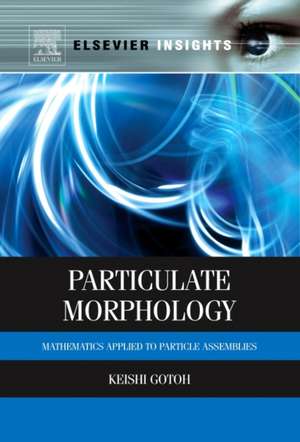Particulate Morphology: Mathematics Applied to Particle Assemblies
Autor Keishi Gotohen Limba Engleză Paperback – 20 mar 2012
- Concisely explains various mathematics and tools applied to the subject.
- Incorporates multiple fields to give a clear view of the application of mathematics in powder technology.
Preț: 576.82 lei
Preț vechi: 749.11 lei
-23% Nou
Puncte Express: 865
Preț estimativ în valută:
110.41€ • 119.97$ • 92.80£
110.41€ • 119.97$ • 92.80£
Carte tipărită la comandă
Livrare economică 19 aprilie-03 mai
Preluare comenzi: 021 569.72.76
Specificații
ISBN-13: 9780323282574
ISBN-10: 0323282571
Pagini: 96
Dimensiuni: 152 x 229 x 5 mm
Greutate: 0.14 kg
Editura: ELSEVIER SCIENCE
ISBN-10: 0323282571
Pagini: 96
Dimensiuni: 152 x 229 x 5 mm
Greutate: 0.14 kg
Editura: ELSEVIER SCIENCE
Public țintă
Researchers and students in chemical engineering, materials science and mathematicsCuprins
Preface
1. Spatial Structure of Random Dispersion of Equal Spheres in One-Dimension
2. Spatial Structure of Random Dispersion of Equal Spheres in Two-Dimension
3. Preliminary Mathematics
4. Radial Distribution Function
5. Sample Size for Measuring Particle Concentration
6. Introduction to Statistical Thermodynamics
7. Structural Comparison of Molecular System and particle Assemblies: Particle Morphology
Closing Remarks
1. Spatial Structure of Random Dispersion of Equal Spheres in One-Dimension
2. Spatial Structure of Random Dispersion of Equal Spheres in Two-Dimension
3. Preliminary Mathematics
4. Radial Distribution Function
5. Sample Size for Measuring Particle Concentration
6. Introduction to Statistical Thermodynamics
7. Structural Comparison of Molecular System and particle Assemblies: Particle Morphology
Closing Remarks
